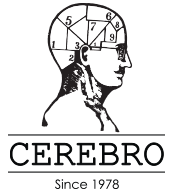Product Details
The wealthy businessmen and fellow New Yorkers who financed Cyrus Field's vision of a submarine cable across the Atlantic and served as the board of the company that would make that vision a reality were known the "Cable Cabinet." The First Investor Cyrus Field's January 1854 meeting with Frederick Gisborne, owner of the Newfoundland Telegraph Company, convinced him of the commercial possibilities of running a telegraph line from Ireland to Newfoundland. But Field, a savvy businessman, knew that a large amount of money would be required to make the project work. The first man he went to see was a Gramercy Park neighbor. Peter Cooper had made his fortune buying a glue factory and improving its products, resulting in a first-year profit of more than five times his investment. He then entered the iron industry and made the United States' first locomotive, the Tom Thumb. In his 60s when Field came to see him, Cooper was focused on establishing the technical college called the Cooper Union. But something about the cable project intrigued him. As he would later write, he saw in the cable "a means by which we would communicate between the two continents, and send knowledge broadcast over all parts of the world." Believing that the cable "offered the possibility of a mighty power for the good of the world,"" Cooper agreed to invest in it. Money and Maps Armed with that endorsement, Field quickly rounded up other backers: Moses Taylor, a director of the company that would become Citibank; Marshall Roberts, a successful shipowner; and Chandler White, a long-time associate who had also prospered in the paper business. Together with Field, his attorney brother David, Gisborne, and Samuel Morse, these men met for four nights in a row in the dining room of Field's house, poring over maps and charts spread out on the table. The Company Is Established On March 10, 1854, the Cable Cabinet agreed to take over Gisborne's company and form the New York, Newfoundland, and London Telegraph Company (N.Y.N.L.T.C., or the Company). Once Field had secured exclusive rights from the Newfoundland government to lay cable, the Cabinet re-convened on May 8, and in 15 minutes elected Cooper as president of the Company, White as vice president, and Taylor as treasurer. All the investors, including Cyrus Field, also became directors of the N.Y.N.L.T.C. Staying the Course The Cable Cabinet managed to raise $1.5 million in private funding for the project, an amount equal to roughly 2.5 percent of the total expenditures of the United States government at that time. But difficulties in laying a cable across Newfoundland and the Cabot Strait meant that the Company had almost exhausted its resources when it came time to lay cable across the Atlantic. In Field's words, when the Cable Cabinet first agreed to support the project, "God knows that none of us were aware of what we had undertaken to accomplish." Field himself was forced to sail repeatedly to England to raise more money, and after the failure of the 1858 cable, it seemed as if the project might never succeed. But the members of Cable Cabinet persevered, continuing to invest money and, in the case of Cooper, often having Company funds drawn against his personal account. All but White, who had died, were still Company officers at the time of the successful cable laying in 1866. As Wilson Hunt, who had replaced White on the Board of the N.Y.N.L.T.C., put it, "Since they had already spent so much money on the telegraph line, they had better spend a little more." And Cooper would later write that he never regretted his involvement with the transatlantic cable, "although it was a terrible time to go through." The Cable Cabinet Portrait Twenty-five years to the day after the Cable Cabinet first committed itself to the transatlantic project, Field hosted a massive celebration at his Gramercy Park residence. The invitations were printed by Tiffany & Company, and 1,000 people attended. But an even more enduring memorial came courtesy of the renowned American portraitist Daniel Huntington, who presented his painting The Atlantic Cable Projectors to the New York Chamber of Commerce in 1895. Although Huntington took some liberties in his portrait, adding himself to the scene and including Hunt even though in 1854 he had not yet joined the Company, The Atlantic Cable Projectors still achieved its stated aim, to "remind those who come after us what manner of men they were who achieved so great a work for their country and for the world."This cigar label info from :www.pbs.org
 View Cart {{shoppingcart.totalQuantityDisplay}} Item(s)
View Cart {{shoppingcart.totalQuantityDisplay}} Item(s)
 View Cart {{shoppingcart.totalQuantityDisplay}} Item(s)
View Cart {{shoppingcart.totalQuantityDisplay}} Item(s)
